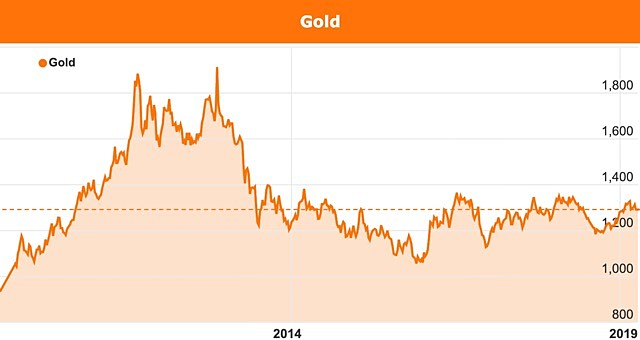China joins Russia in gold-buying binge as the east continues to diversify away from the greenback

In 2018, central banks purchased the most gold by volume since 1967, with Russia leading the way and now China following suit.
Gold’s attractiveness as an investment is showing no signs of abating, with emerging global superpower China being the latest country to increase its reserves.
According to data from The People’s Bank of China, the country boosted its reserves to 60.62 million ounces during March, up from 60.26Moz a month earlier.
The activity marks the fourth straight month of increased gold buying by the bank, with 42.9 tonnes added over that timeframe.
In parallel, Chinese gold companies have made international investments of nearly US$4 billion since 2011, boosting their gold reserves by more than 800t.
China’s keen gold appetite reflects a broader trend by central banks stocking up on gold buying reserves, with the World Gold Council stating that central banks added 651.5t to official gold reserves in 2018, the second highest yearly total on record.
Russia also buying gold
China’s gold-buying spree follows in the footsteps of Russia’s move to increase its gold bullion reserves, with the nation stepping up its efforts to reduce reliance on the US dollar.
According to the council, Russia’s central bank bought 274t of the bullion last year, valued at more than US$11 billion.
In February 2019, alone, Russia’s gold reserve holdings skyrocketed by 1Moz, with the country now accounting for 40% of central bank gold buying and 6% of global demand.
As for China, the country has historically revealed little information on its gold reserve activity, the country often sustains long periods without revealing increases in its gold holdings.
With China now loading up its gold reserves at a steady rate, it reflects the pace of gold purchasing activity undertaken back in mid-2015 when the nation increasing its bullion holdings almost every month for a short period.
China and Russia are now going head to head in their gold buying activity on the back of slowing economic growth and a move to reduce reliance on the US dollar.
While Russia now ranks among the top five gold holders in the world, the US takes the first spot with reserves of the bullion totalling more than 8,000t. Back in January, China had the sixth-largest gold reserves in the world.
However many skeptics question the validity of this data with the US accused of overstating its holdings and China massively understating.
Chinese slowdown
With the US-China trade war ongoing, China is facing stagnating economic growth in coming years.
According to recent forecasts by the International Monetary Fund, China’s annual growth is predicted to rise a marginal 0.1% to 6.3% in 2019.
China, which remains the world’s second-largest economy, received endorsement from the IMF on its recently announced stimulus measures, but the agency cautioned that uncertainty over China’s outlook remained.
While China’s economy expanded at a rate of 6.6% in 2018, the figure represented the slowest rate of expansion since 1990.
Demand set to prop up prices
Gold’s attractiveness as a traditional safe-haven metal continues to rise amid a weakening US dollar.
Consultancy firm Metals Focus has predicted gold demand to remain strong this year, with prices set to average US$1,310/oz.

The price of gold in US dollars has been stabilising and finding support over the past 5 years.
This compares to the Australian Government’s Department of Industry, Innovation and Science’s latest Resources and Energy Quarterly, which forecast prices of the safe-haven metal to increase by 0.4% in 2019 to average US$1,275/oz.
However, the bullion isn’t immune to short-term fluctuations, with positive US economic data out this week temporarily weighing on gold as it dipped below US$1,300/oz.
Longer-term, the outlook is bullish, with Goldman Sachs Group predicting continued central bank demand for gold will prop up prices.
